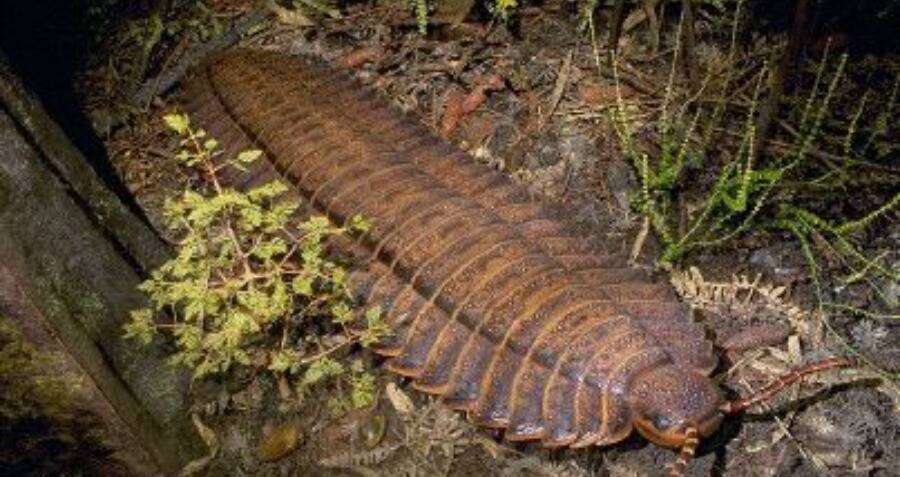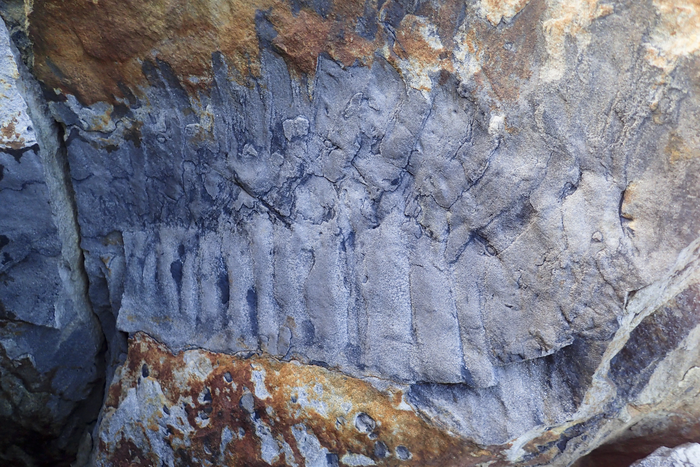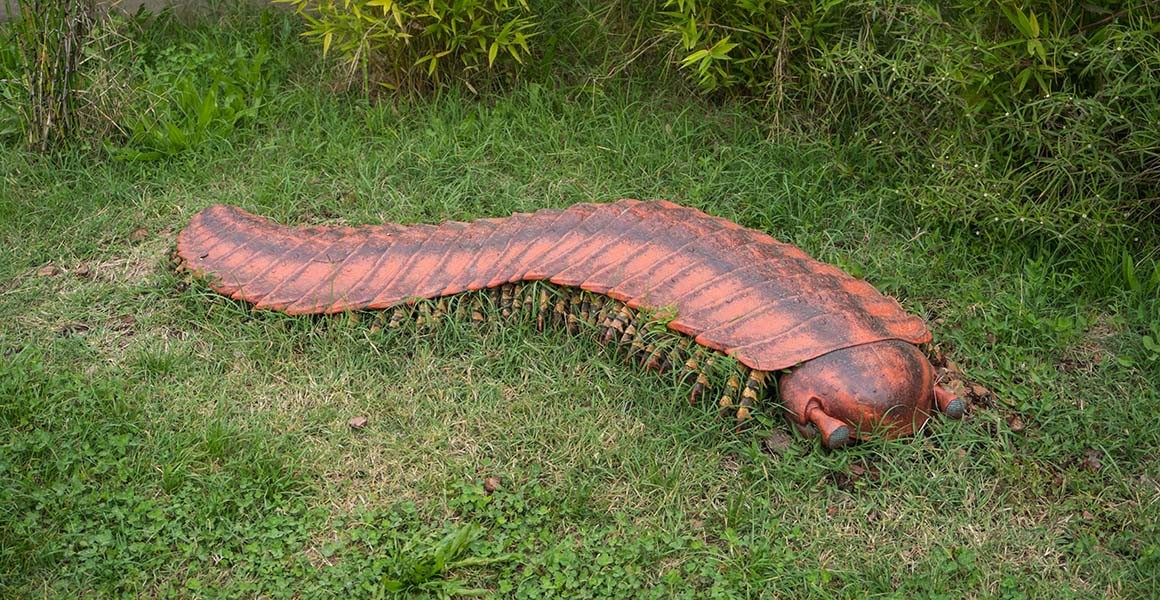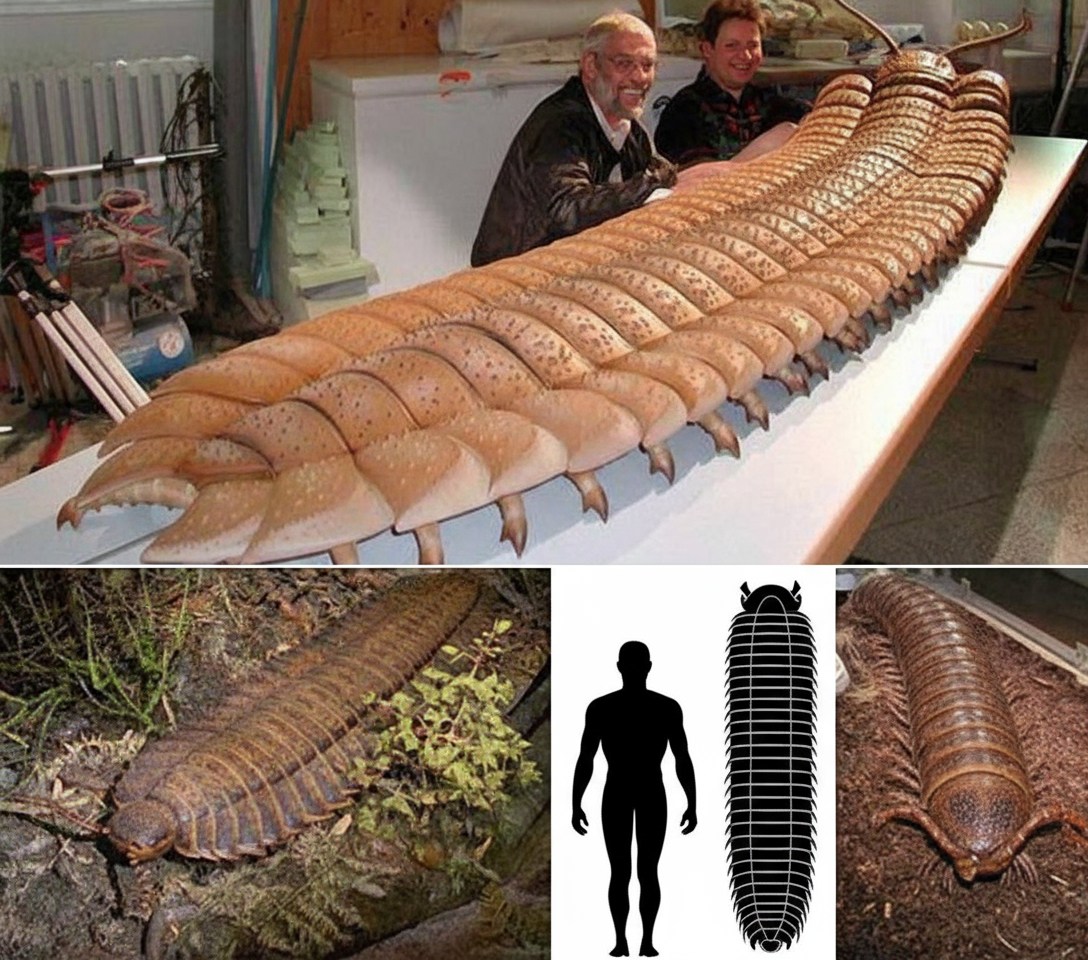On the windswept shores of northern England, a breathtaking discovery has revealed one of the most extraordinary creatures ever to crawl upon the Earth. Embedded within ancient sandstone cliffs, scientists have uncovered the largest-known fossil of a giant millipede, a prehistoric titan known as Arthropleura — a creature so immense it could stretch as long as a modern car.
Unearthing a Prehistoric Titan

The fossil was discovered quite by accident in Northumberland, when a section of sandstone collapsed along a coastal escarpment. Within the fallen rock lay a perfectly preserved exoskeletal segment, belonging to a creature that roamed the Earth around 326 million years ago, during the Carboniferous Period — long before dinosaurs or mammals appeared.
Measuring an astonishing 2.6 meters (8.5 feet) in length and weighing close to 50 kilograms (110 pounds) in life, this Arthropleura specimen dwarfs every living arthropod known today. Its sheer size offers a humbling glimpse into a world when the air itself was richer in oxygen, allowing invertebrates to reach dimensions unimaginable in the modern era.
Life in the Carboniferous Forests
During the Carboniferous, the planet was a humid greenhouse blanketed by dense forests of towering ferns, horsetails, and early conifers. Vast swampy ecosystems stretched across what would one day become Europe and North America, teeming with giant insects, amphibians, and primitive reptiles.
Arthropleura reigned supreme in this world, the largest land invertebrate ever known. It would have moved slowly but purposefully through the undergrowth, its dozens of jointed legs — possibly up to 100 pairs — rippling in rhythmic waves beneath its armored body.
While earlier scientists once imagined it a predator, modern research paints a gentler picture. Arthropleura was most likely herbivorous, feeding on decaying plant matter, seeds, and spores littering the forest floor. Its segmented exoskeleton, made of hardened chitin, provided protection against early amphibian predators and environmental hazards alike.
A Window Into Deep Time

The newly found fossil was described by paleontologists at the University of Cambridge, who called it “a once-in-a-lifetime discovery.” Unlike most Arthropleura fossils, which consist only of fragmented tracks or molted exoskeletons, this specimen includes a preserved portion of the creature’s carapace, offering unprecedented insight into its anatomy and lifestyle.
Dr. Neil Davies, who led the research, explained:
“The preservation of this fossil is extraordinary. It gives us the first solid evidence of just how enormous Arthropleura could grow — these creatures were essentially the monarchs of the forest floor.”
The sandstone layer containing the fossil was once part of an ancient river delta, suggesting that this individual may have died near a stream and was quickly buried by sediment, its body shielded from decay and scavengers for millions of years.
Why Was It So Big?

The colossal size of Arthropleura is one of paleontology’s great marvels — and mysteries. The most widely accepted explanation lies in the Carboniferous oxygen boom. At that time, the Earth’s atmosphere contained up to 35% oxygen (compared to today’s 21%), allowing arthropods, whose respiration depends on diffusion through spiracles, to grow far larger than their modern relatives.
This high-oxygen world supported a menagerie of giants: dragonflies the size of seagulls, scorpions longer than a man’s arm, and centipedes that could stretch across a room. Yet even among these, Arthropleura was unmatched — a true monarch of its ecosystem.
The Fall of the Giants

Despite its dominance, Arthropleura eventually vanished around 290 million years ago, near the dawn of the Permian Period. As the global climate became drier and the lush Carboniferous forests receded, the giant arthropods lost their moist, oxygen-rich habitats. The drop in atmospheric oxygen sealed their fate, ending an evolutionary chapter where invertebrates reigned supreme.
Their disappearance paved the way for the rise of amniotes — reptiles and eventually mammals — whose lungs could thrive in the new, thinner air.
Echoes from a Lost World

Today, the fossilized remains of Arthropleura stand as a haunting testament to Earth’s deep history — a reminder that our planet has hosted forms of life far stranger, larger, and more diverse than we can easily imagine. The creature’s segmented armor and immense scale evoke a time when evolution experimented on an epic scale, filling the primeval forests with beings that defy comprehension.
The fossil is now under study at the Sedgwick Museum of Earth Sciences in Cambridge, where researchers continue to analyze its structure and environment. Each layer of the sandstone, each mineralized ridge, offers new data about how these giants lived, breathed, and moved through their ancient world.
The Legacy of Arthropleura
Though long extinct, Arthropleura’s legacy endures. Modern millipedes and centipedes — though mere shadows of their titanic ancestor — still bear the evolutionary blueprint of segmented strength and adaptability that allowed arthropods to dominate nearly every habitat on Earth.
Standing before the fossil, one can almost imagine the slow ripple of hundreds of legs moving through ancient leaves, the sound of its armored plates brushing against the forest floor, and the dense, oxygen-rich air that once nourished giants.
It is a humbling reminder that Earth’s history is far older and wilder than we often imagine, and that beneath our feet lie the silent remains of creatures that once ruled the world in ways that now seem impossible.
Sources:
- Journal of the Geological Society (2022): “A Giant Arthropleura from the Carboniferous of Northern England”
- University of Cambridge Department of Earth Sciences
- Natural History Museum, London – Arthropleura Fossil Record Database
- BBC Earth Archives – “When Insects Were Giants”
